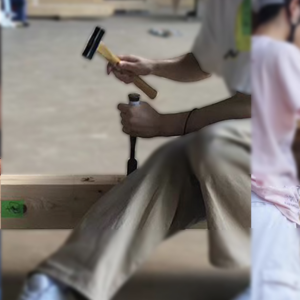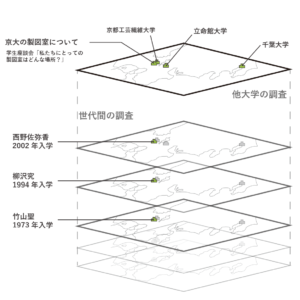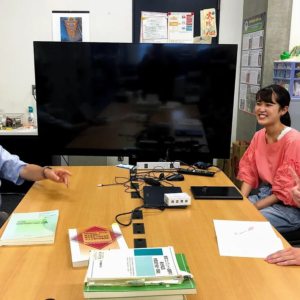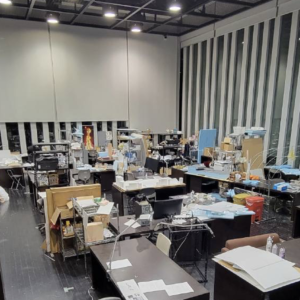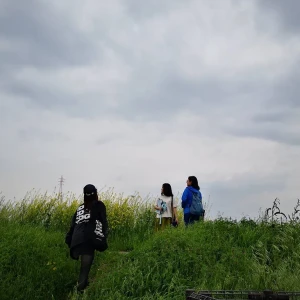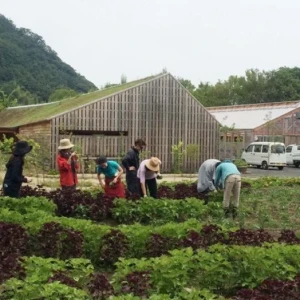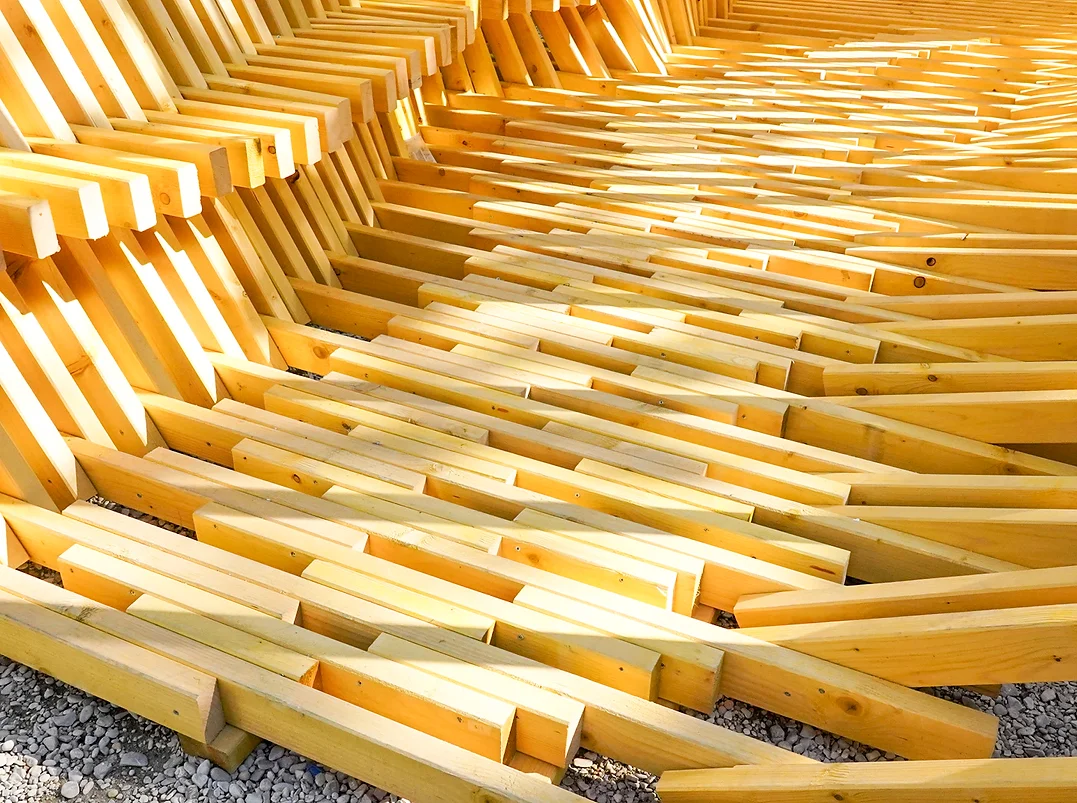
【ダニエル研究室】Paris Tea Pavilion
Construction

Construction in Paris
At the end of the semester, preparations began for construction in Paris. Permission to place the pavilion beside the Seine was sought and received from the local authorities. Several students from Kyoto University and Osaka Sangyo University flew to France to assist the ESA students – and so, finally, they were able to meet each other in person. The Japanese students brought with them tea samples and a noren curtain provided by Morihan.
Wood and other necessary materials were sourced from local suppliers in the Paris region. Thomas Daniell and Kentaro Takeguchi spent a day with the students at the beginning of the construction period, which included a tour of Asile Flottant. Construction took approximately one week, using the courtyard of ESA for prefabrication and assembly. Onsite improvisation led to a slightly different form than the students’ original design drawings. Budget constraints caused the pavilion to be reduced in size by about a third, and other modifications were made to the elements and details as a consequence of problems or opportunities revealed by the initial mockups.
The built result is thus a manifestation of both idealized design conceptions and practical proof-of-concept tests, achieved through sensitive responses to the available time, people, materials, and environment. As of this writing, the pavilion remains at ESA, with the long-term goal of moving it to the Seine River site. It will eventually be disassembled, and the wood put in storage to be used for future projects.

Construction in Paris


Outcome
Hands-on construction work with real materials allows the direct testing of innovative detail solutions and design possibilities. Confronted with the freedom of form now permitted by digital modeling, it may seem romantic and reactionary to advocate the use of physical models and full-scale mockups. Paradoxically, the merits of the physical model lie in its material rigidity, and the drawbacks of the digital model lie in its unlimited flexibility. The design process should be predicated on an awareness of the friction and resistance of the real world. The issue is not the comparative speed and precision of computers versus handcraft, but the feasibility of the shapes they each engender. No matter how precise the original pavilion design appears on paper or on a computer monitor, it is unavoidably transformed by the properties of the materials. The Paris Pavilion studio forced students to engage with the tactile, responsive, material world, to respond to the resistance and friction of real things. And, not least, to engage with other people during a period when the pandemic panic seemed to make that all but impossible.



Completed pavilion
Comments from students of Kyoto University
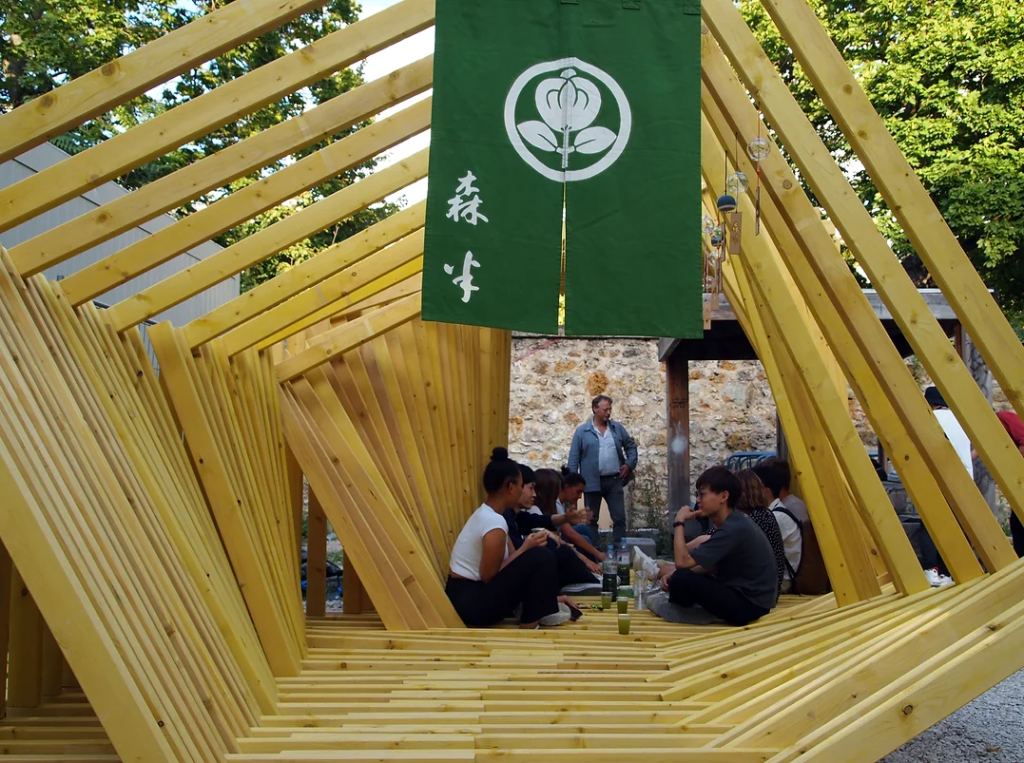
Nasu Mayuko
The students from the French university, as well as from Osaka Sangyo University, all had different knowledge and experiences, and different points of view. This was a bit of an inconvenience, but it was interesting to see for the first time that my ideas were discussed from a different point of view and that I was able to interpret and shape other people’s ideas in my own way.
Anju Kato
It was my first experience of creating something with multiple people online, and I found it both interesting and challenging. As we progressed through the stages, the number of team members increased, and I learned how hard it is to respect each team member’s opinion and give them a role. It was also interesting to see the time adjustments due to the time difference and how the values and cultural differences between countries really showed in the design process. I would like to apply what I learnt from this opportunity in my next project.
Taichi Kaga
All in all, it was a very stimulating experience. It took a lot of time and energy to exchange opinions in English, which is not our mother tongue, with the person on the other side of the screen, who is very difficult to communicate with even in Japanese, but we learned a lot from the process of sharing our feelings and thoughts with other students of architecture. The result is a work that is full of the aspirations of all the friends, teachers and colleagues involved.
We are very proud to have been involved in this first real project, from the basic design to the construction, and at the same time we can’t thank enough all the people who have supported us in this precious experience. We hope that this project will continue to develop and prove to be very fruitful for the next participants.
Jiro Akita
Although it was only a simple pavilion, it was the first time for me to design and construct a building in a foreign country, and it was very difficult at times. I would like to thank all my friends and teachers who participated in the workshop with me.
Usaki Tsujimoto
I learned how difficult it is to design a building while taking into account the practical limitations. It was also a great experience for me to see what other universities are doing.
